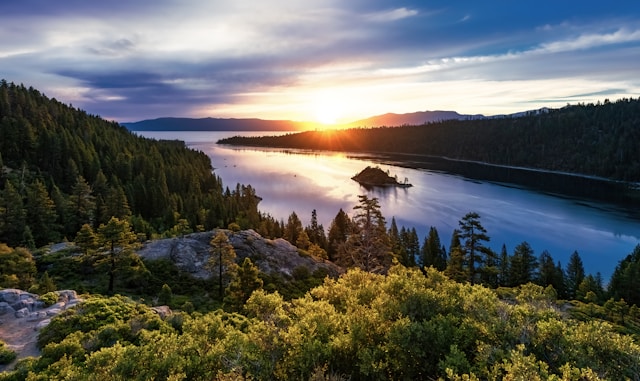Untapped trillions in the World Bank’s climate strategy

By ignoring natural capital, a huge investment opportunity is being missed and societies globally put at risk, writes Nicola Ranger.
For the last three years, the World Bank has been rolling out a new class of country-level diagnostics: its Country Climate and Development Reports (CCDRs). Aiming to provide governments and partners with a blueprint for how to achieve climate-resilient, low-carbon development, these reports are already shaping national strategies, feeding directly into World Bank lending decisions and International Monetary Fund (IMF) programmes, and guiding billions of dollars of investment. The Bank itself highlights them as a cornerstone of its mission to “end extreme poverty and boost shared prosperity on a liveable planet”.
But our new research shows the World Bank is missing a critical piece: natural capital. Closing this gap is not about bats, bears and butterflies – it’s about hard economics and the critical natural infrastructure that forms the foundation of our societies – providing water, air, food, resources and a stable climate. The Bank’s own numbers show this is a trillion-dollar opportunity to unlock growth, stability and resilience for governments and investors alike.
Ignoring nature degradation means ignoring macro-critical risks
The stakes are enormous, and our study reveals trillions in hidden risks. Half of global GDP is highly dependent on nature, yet degraded soils, polluted water and biodiversity loss are already hitting growth. The IPBES Global Assessment report by the world’s leading scientists showed that 14 of the 18 critical ecosystem services on which our society depends are being degraded. Our review of more than 70 World Bank CCDRs finds that forests and water are covered, but risks from soil degradation, pollution and ecosystem decline are often overlooked. Biodiversity is barely mentioned, even in megadiverse hotspots like Brazil and the Democratic Republic of the Congo (DRC).
The evidence that we pieced together from across the CCDRs is stark. In Brazil, vegetation loss already costs the soy industry US$99 per hectare and worsens water crises that undermine hydropower, exposing the economy to blackouts. In Pakistan, air pollution slashes GDP by 10 per cent annually and cuts life expectancy by four years. Over-use of fertilisers is degrading soils and water supplies and curtailing long-term growth. In Malawi, where 80 per cent of land needs restoration, erosion is degrading water and throwing development off-track. Meanwhile, Morocco’s CCDR champions green hydrogen potential but misses the water stress – groundwater is already overused by 30 per cent – that could derail those ambitions. Natural capital is critical infrastructure and powers growth and development.
These are not marginal environmental issues; they are macro-critical risks that feed directly into fiscal fragility, debt distress and sovereign creditworthiness. Ignoring natural capital in core diagnostics and decisions leaves governments, lenders and investors flying blind.
Symptomatic of a wider problem
As the Dasgupta Review into the economics of biodiversity made clear, an underlying cause of the environmental damage we see is that nature remains largely invisible in the economic toolkit that is used to guide policy, investments and business decisions. The CCDRs are one illustration of this blind spot. The same is true for the IMF, where our earlier research showed that debt sustainability analyses overlook nature – even in the most vulnerable countries where its erosion most visibly undermines growth and stability. With global biodiversity being lost at an unprecedented rate, and seven of nine planetary boundaries now breached, it is vital that we bridge this gap and begin embedding nature into the world’s core economic statistics.
An asset class in waiting
The prize of better accounting for nature’s value is not only for governments. Nature is not just a risk: for private investors, valuing nature could unlock a new generation of bankable, investable pipelines.
The CCDRs already hint at investable opportunities. In the DRC, restoring degraded forests could yield US$400 billion a year in carbon and ecosystem services, with scope for forest bonds and biodiversity credits. In Malawi, scaling up restoration could generate US$74 million annually in voluntary carbon markets while boosting agricultural productivity. In Indonesia, mangrove and peatland restoration – already pledged at a historic scale – offers resilience and aquaculture benefits that could underpin blended finance deals. In Brazil, enforcing the Forest Code and scaling up sustainable land-use could deliver inclusive rural growth and unlock significant carbon market revenues.
This is inclusive and just finance for emerging markets and developing economies to adapt to climate change, supporting local communities to build resilience – and acts as climate mitigation finance too, savings billions of tonnes of carbon.
And it is precisely the kind of deal flow global investors want: revenue-generating, risk-reducing and climate-aligned. Yet without systematic valuation and modelling, these remain scattered anecdotes. By more systematically integrating nature into its diagnostics, the World Bank could lay the blueprints for scaling up adaptation and natural capital investment.
The broader momentum is clear
The Kunming-Montreal Global Biodiversity Framework commits countries to protect 30 per cent of land and sea by 2030. Multilateral development banks (MDBs) have pledged to mainstream nature and the World Bank is taking important steps, including two major publications in the past month and its Global Program on Sustainability providing analyses and technical assistance to clients. Private finance is experimenting with biodiversity credits, blended finance and blue bonds. Without credible diagnostics to anchor these flows, investor appetite will faulter. CCDRs, if upgraded, could provide exactly that.
Looking ahead, COP30 in Brazil and the ongoing MDB reform agenda offer a critical window. A first wave of pilot nature-integrated development diagnostics in 2025 could demonstrate how valuing ecosystems strengthens fiscal resilience, debt sustainability and investment pipelines: providing a blueprint to unlock trillions in untapped value.
Overlooking nature is no longer an option. For governments, integrating it into fiscal and debt strategies is vital for stability. For investors, it is the path to scale. And for the World Bank, mainstreaming nature could transform its flagship climate diagnostic tool into the world’s most powerful lever for financing prosperity on a liveable planet.
Mainstreaming Nature into Country Climate Development Reports: A Preliminary Assessment of Opportunities and Needs, a report for the UK Foreign, Commonwealth and Development Office (FCDO), was published today by the CLEAN Helpdesk.

